View/Download this article in PDF format.
H.R. 3080 represents an abdication of responsibility of Congress to reform management of our nation’s infrastructure in a fiscally responsible manner. Faced with a $17 trillion debt, a Corps of Engineers construction backlog exceeding $60 billion, and the need for innovation in managing our growing infrastructure burden, the House Transportation & Infrastructure Committee chose instead to mostly continue business as usual. H.R. 3080 fails to deliver on its “reform” moniker.
Taxpayers for Common Sense urges that H.R. 3080 be substantially amended to address the following concerns or be rejected.
H.R. 3080 contains provisions that would:
- Authorize and study projects without earmarks, but without establishing priorities to limit the project universe.
- Erode the fiscally critical cost-sharing system.
- Result in only a $2 billion net reduction of the more than $60 billion backlog.
- Create a project authorization system that will likely lead to a larger backlog in the future.
- Contains Part II of the FY14 CR’s “Kentucky Kickback”: shifting 75 percent of the costs of the Olmsted lock and dam project to taxpayers while holding nobody accountable for massive cost escalations.
- Force payout of the Harbor Maintenance Trust Fund, wasting funds on low priority dredging projects and likely cannibalizing other parts of the Corps budget in the process.
- Shift private financial responsibilities onto Uncle Sam.
H.R. 3080 lacks reform provisions that would:
- Establish a system for prioritizing federal authorization and investment in the most effective and beneficial projects that would permanently eliminate the earmarking impulse and return authorizers’ authority over appropriations.
- Address the broken Corps benefit-cost-analysis system that low balls costs and inflates benefits by using unrealistic assumptions on funding and discount rates.
- Rationally plan national port development decisions so there isn’t a race to the bottom among ports creating overcapacity and inefficiencies.
- Adjust cost-sharing to incentivize more effective long-term flood and storm damage reduction projects.
- Increase the inland waterway industry’s roughly 10 percent cost-share of the construction, operation, and maintenance of the system.
- Address the massive cross-subsidies and lack of market incentives in the Harbor Maintenance Trust Fund by replacing it with a more user fee approach.
For more information please see the analysis below or contact Steve Ellis, steve[at]taxpayer.net 202-546-8500 x126 or Joshua Sewell, josh[at]taxpayer.net, 202-546-8500 x116.
Taxpayers for Common Sense analysis of selected provisions of H.R. 3080 and commentary on them.
Sec. 101 – Codifies the Corps of Engineers 3-3-3 plan. Feasibility studies to be completed in 3 years for not more than $3 million with concurrent review by District, Division, and Headquarters personnel.A one year extension is possible with notification, otherwise deauthorized. Report on implementation due in four years.
TCS: Some projects will require more than 4 years and $3 million to study. This provision should be modified to address that. The report is not explicitly provided to the public.
Sec. 104 – Eliminates Reconnaissance studies.
TCS: This is part of the new project authorization process created in Sec. 115
Sec. 105 – Eliminates design cost-effectiveness review
TCS: Unclear as to why this is being done.
Sec. 107 – Construction of projects by non-federal interests. This section expands existing provisions from flood damage reduction to all water resource projects (flood and storm damage reduction, navigation, ecosystem restoration) and provides for reimbursement for non-federal contributions to federal costs.
TCS: While this may appear attractive on the face, this provision could effectively shift the management of the nation’s water resources program from Congress and the Executive to private interests. This would be the opposite of prioritizing taxpayer-funded construction of projects that are in the greatest need and in the national interest. It is also unclear how benefit-cost analyses would be conducted. Corps BCA’s have been notoriously inaccurate, who would be responsible for inevitable cost overruns and would it change the effective cost-sharing rate.
Although reimbursement is not required, it is hard to see an instance where a non-federal interest would not be reimbursed. This could also increase the operations and maintenance burden on the Corps. Furthermore, this would reduce available appropriations for projects in areas not as able to self-finance.
Sec. 108 – Contributions by non-federal interests. Allows for non-federal interests to contribute to the costs for project construction, including inland navigation projects and be eligible for reimbursement.
TCS: Similar to our Sec. 107 concerns this will again allow the non-federal interests to dictate where federal dollars are spent. This could again lead to a system where higher priority projects are not funded adequately.
Sec. 109 – Contributions by non-federal interests for management of Corps of Engineers Inland Navigation Facilities. This provision expands a program that enables non-federal interests to contribute to management of recreation facilities to also include the management of the inland navigation system.
TCS: This is a particularly troubling provision because it attempts to address a real problem completely the wrong way. The cost of operation and maintenance of the inland navigation system is 100 percent federal. There is no industry cost-share for maintenance. Even after the 50 percent industry cost-share for construction, the taxpayer picks up 90 percent of the cost of construction, operation, and maintenance of the inland waterway system. Instead of voluntary contribution system, Congress should establish meaningful cost-share for the operation and maintenance of the inland waterway system. In particular, low traffic waterways should have a heavy industry contribution for ongoing maintenance or simply be devolved to private or state or local interests.
Sec. 110 – Additional Contributions by Non-Federal Interests. This provision was added in committee and amends the cost containment cap for projects. Under current law a project that exceeds the authorized cost by 20 percent, the new total project cost must be approved by Congress. This provision enables the non-federal interest to pay for the excess portion as long as it doesn’t increase the federal share of the costs.
TCS: This provision is likely fine, however it should be clarified that it doesn’t increase the federal share beyond the original cost estimate.
Sec. 113 – Allows for in-kind credit for work conducted by non-federal interests prior to partnership agreement.
TCS: In-kind crediting can be abused and end up costing taxpayers more. Furthermore there has not been an analysis to see if in-kind crediting has been effective. By extending crediting even earlier in the process this make it more likely to be the case.
Sec. 114 – Water Infrastructure Public-Private Partnership Pilot program. This provision creates a pilot program to enable non-federal interests to manage the design, construction, and operation of a currently authorized (and generally funded) project. The program is limited to 15 projects selected by the Secretary according to criteria set by the legislation. Federal costs are limited to the existing federal costs of the authorized project.
TCS: This is a good provision that could have merit and may be able to devolve the Corps of Engineers role in projects.
Sec. 115 – This section creates a new scheme for authorizing projects. Annually, the Secretary would publish a request for non-federal interests to submit proposals for feasibility studies or modifications to existing projects. The Secretary would review the proposals and submit a report to Congress that includes the proposals that are: in the Corps mission area; require authorization by Congress; are not currently authorized; have not been submitted previously; and could be constructed by the Corps. In addition for each proposal the Secretary would detail the potential benefits including: reducing risks to human life or property; benefit the national economy; stimulate job creation; reduce future disaster needs; promote development of energy resources; improve competitiveness of U.S. exports; improve water-related transportation; restore environment; promote cost-effective solutions to water resource challenges.
In addition, the non-federal interest that would be the cost-sharing partner will be identified and include a letter of support from that interest. Also, the federal and non-federal costs should be identified. Proposals not included in the report will be detailed in an appendix with a rationale (the appendix was added by amendment in committee).
TCS: This provision could very likely add to the backlog. The legislation does not include criteria that could force the administration to target and prioritize the proposals submitted for evaluation. Instead, the criteria are simply a catalogue of the various types of Corps projects. In addition, this system could inundate the Corps with proposals that have very little likelihood of being funded but must be evaluated. The theory that Congress would then parse through the list and eliminate some is belied by the history of the Corps program and the existing backlog.
For a system like this to work, Congress should create more extensive criteria, measures, and metrics that would limit the number of the proposals submitted to the Corps (or make it easier to weed through proposals initially). In addition, Congress should direct the Corps to only submit the highest priority proposals that do not, in aggregate, exceed an established authorized cost cap. There could be a mechanism for Congress to amend the report to elevate a proposal that was in the appendix while staying under the total cap.
Sec. 116 – President’s budget submission. The President’s budget submission would be required to detail which Corps construction projects should receive full authorized funding that year and for the successive four fiscal years. It should also detail how that determination was made. A $2 billion construction budget would be the basis for the estimates.
TCS: In general, this is a good provision, however, the Corps has not received $2 billion in construction funding for many years, so this may be an overly optimistic list. In addition, most construction projects are multi-year and don’t need all of their construction funding at once.
Sec. 118 – Non-federal plans to provide additional flood risk reduction. Directs the Secretary to construct the locally preferred plan for flood damage reduction if the plan provides higher level of protection than the federal plan, is cost-justified, and the non-federal interest pays the higher incremental cost.
TCS: Under current law, the Secretary has the ability to construct the locally preferred plan, but is not required to do so. There is no reason to make it automatic.
Title II – Navigation Improvements
Sec. 201 – Expanded use of Harbor Maintenance Trust Fund. This provision ramps up federal spending from the Harbor Maintenance Trust Fund (revenue to this comes from an ad valorem tax on cargo imported to the U.S.) by increasing annually the percentage revenues that must be spent from the trust fund:
FY14 – 65 percent of FY13 revenue
FY15 – 67 percent of FY14 revenue
FY16 – 69 percent of FY15 revenue
FY17 – 71 percent of FY16 revenue
FY18 – 73 percent of FY17 revenue
FY19 – 75 percent of FY18 revenue
FY20 and thereafter – 80 percent of previous year’s revenues
In years the target is met this provision allows for up to 5 percent of funds to be used to fund non-federal responsibilities in donor ports (those that pay more into the trust fund than is paid out to them). These non-federal activities included dredging berths and funding confined disposal of contaminated sediments.
TCS – There are significant problems with the HMTF and the tax that funds it and this provision does nothing to change that. In fact, the cross-subsidies and lack of market signals would be exacerbated by this provision. In addition, the use of HMTF funds for non-federal activities is an effective erosion of the existing cost-share provisions established by WRDA 86.
Under current law, two ships with exactly the same dimensions, requiring exactly the same channel depth and dredging could pay vastly different taxes because it is based on the value of the imports, not the dredging needs of the vessels. In another instance the exact same ship, with the same cargo would pay the same taxes whether the port was 100 miles inland and required extensive maintenance dredging or right at the coast requiring little. Finally, because it was ruled unconstitutional, exported cargo is not subject to the tax. This is both trade distorting and despite the exporters obvious dredging needs, they are not contributing any revenue.
Instead of prioritizing funding to the most critical ports and dredging needs, this provision just directs that more money be spent from the trust fund. It would be far more effective and less wasteful to craft a proposal that would generate revenue based on dredging needs and costs. Even reducing the tax rate would be better than this proposal.
Finally, although this section includes a non-binding sense of Congress that this should be new revenue and additive to Corps of Engineers appropriations, it is more likely in this tight budgetary climate that the increased funding for maintenance dredging will cannibalize funding from other Corps activities.
Sec. 202 – Assessment and Prioritization of Operation and Maintenance. Requires the Secretary to report on the dredging needs of the nation’s harbors and how much these needs are unmet by budgeted funding. Also requires a 5 year plan of where harbor funding will be allocated. Directs that funding shall be “equitable” amongst all the harbors and while “national and regional significance of harbor” should be considered it should not be made solely on “tonnage transiting through the harbor.” Creates “Emerging Harbor” category that reserves 10 percent of the dredging funding for harbors that transit less than 1 million tons of commerce. Directs that all Great Lakes ports be considered as components of an interdependent system
TCS – this section turns the concept of prioritization on its head, directing that all ports be treated equally, when in fact they are not equal at all in terms of economic importance. Federal investments should be prioritized to those that are in the national interest, not the local interest. he emerging harbor category is patently ridiculous. According to statistics compiled by the American Association of Port Authorities, in 2011 this provision would have reserved ten percent of the funding for ports that were 136th or lower in total tonnage. Instead, some of these ports should be evaluated for devolution to the states.
Sec. 203 – Preserving United States Harbors. Enables non-federal interests to petition the federal government to take over maintenance of their harbor as though it was a federal harbor. The determination is to be based on projected economic benefits (transportation savings and job creation) and navigation safety, national security, and sustainability of subsistence harbors.
TCS – The federal government should only be in the business of maintaining harbors that contribute to net national economic development. This provision could lead to maintenance of private ports for individual companies – corporate welfare.
Subtitle B – Inland Waterways
Sec. 212 – Project Delivery Process Reforms. Creates a series of systemic reforms to identify best practices, improve on-time and on-budget delivery, identify construction techniques, and make recommendations for reform, including pilot projects to help determine these criteria.
Mandates that the Inland Waterway Users Board (IWUB) meet semiannually, and provide regular recommendations to Congress and the Secretary. The Secretary is required to communicate quarterly with users board on the status of all inland navigation construction projects and studies. Requires the Secretary to work with the IWUB to develop a 20-year capital investment program within a year. This report will be based on previous studies and will ensure that investments are made in all geographic areas of the system and ensures efficient funding of inland waterways projects. This is to be updated every five years.
TCS – The project delivery process reforms make sense. The increased role for the IWUB and direction that investments be made across the system do not. There is no analogue for the IWUB in the transportation program and the federally funded entity has been little more than a booster for spending increased taxpayer funds on projects benefitting their industry. Earlier IWUB studies about dealing with shortfalls in the inland waterways trust fund have provided for increased fuel tax revenue, but also increasing the federal subsidy for inland waterways beyond the 90 percent subsidy that exists to date. Because taxpayers contribute more than 90% of the funds for the inland waterways system, there should also be taxpayer representation on this board.
Furthermore, all parts of the inland waterways are not the same. More than 80 percent of the traffic is on the Mississippi, Ohio, and Illinois Rivers and the Gulf Intracoastal Waterway. It makes no sense to invest in low traffic waterways; in fact these segments should no longer be part of the federal system.
Sec. 213 – Efficiency of Revenue Collection. Within 2 years, a GAO study on the efficiency of collecting the inland waterways fuel tax, whether alternative methods of collection would result in increased revenues, and an evaluation of alternative collection.
TCS – Supports.
Sec. 214 – Inland Waterways Revenue Studies. Directs the Corps of Engineers and Treasury to study the potential for issuing tax-exempt bonds. These bonds would be secured by current and projected revenue from the inland waterways trust fund. Secretary would meet with representatives of commodities and bulk cargos shipped on the waterways, persons owning, operating, using, or otherwise benefitting from hydropower facilities, electric utilities that use these waterways for cooling of facilities, municipal and industrial water supply, recreation, irrigation, or flood damage reduction; other stakeholders as identified by the secretaries.
The Secretary would conduct a study looking at other user fees and revenue from beneficiaries of the inland waterways that would generate $190 million annually. This would be in conjunction with fuel tax revenue, which over the last decade has not generated more than $100 million in any year.
TCS – Supports the idea of studying bonds. Some concerns about taxpayer risk and increased tax complexity. Taxpayers should be one of the stakeholders identified.
The user fee and revenue study is important. However, it should be expanded to determine the type and amount of user fees and revenue necessary to operate and maintain as well as construct the inland waterways system. Right now all of the inland waterway O&M costs are borne by the federal treasury, a system that is unique among transportation modes. Furthermore, it should be recognized that the vast majority of the inland waterways system has been designed to maximize benefits to navigation, which in many cases reduces potential water supply and flood damage reduction benefits. And that absent a navigation system there would still be water supply, recreation, and environmental benefits from these river systems.
Sec. 215 – Inland waterways stakeholder roundtable. This provision follows on the user fee and revenue report directed by section 214 above and directs the Secretary hold a roundtable meeting to get stakeholder input on the report and prioritizing infrastructure needs. The outcome would be another report that summarizes the roundtable and recommendations for next steps.
TCS – With the caveats noted above, TCS supports.
Sec. 216 – Preserving the Inland Waterway Trust Fund. This provision increases the federal treasury share of construction costs at Olmsted lock and dam (Ohio River) from 50 percent to 75 percent. It also includes a sense of Congress that expenditures on this project should not be less than $150 million per year. The Secretary is directed to provide a report on the lessons learned from the Olmsted project and that any inland waterways project that has an estimated cost of $500 million or more shall have an annual financial plan submitted to Congress.
TCS – The federal share of the shockingly over budget Olmsted project should not be increased. This is the second half of the so-called “Kentucky Kickback” that was included in the recent continuing resolution/debt ceiling package that increased the authorized cost of the project to $2.9 billion (and current Corps documents actually estimate the total cost at $3.1 billion). Instead of the $387.5 million taxpayer cost that was estimated in 1988, this provision would put the cost to the treasury at more than $2.3 billion, an increase of 500 percent over the original estimate.
Sec. 218 – Assessment of operation and maintenance needs of the Atlantic Intracoastal Waterway and the Gulf Intracoastal Waterway. Requires the Secretary to submit an analysis of the operation and maintenance needs of the two waterways and the costs to maintain them at authorized length, width, and depth; the amount of funding in the President’s budget; and unmet needs.
TCS – These two different waterways are vastly different. The GIWW is used for significant commercial activity. The AIWW is mostly used for personal watercraft and should be considered for not being maintained federally.
TITLE III–DEAUTHORIZATIONS AND BACKLOG PREVENTION
Sec. 301 – Deauthorization of inactive projects. This provision directs the Corps to identify authorized projects to deauthorize. The projects would be selected on the basis of either lacking local support, lack of federal or non-federal resources, or the project is no longer relevant or feasible. The list of projects would have to have at least $12 billion in federal cost to complete.
The universe of projects to be evaluated would be authorized prior to WRDA 2007, and had either not had construction initiated or not have had any construction funding for the project or a separable element in the five years preceding July 1, 2013. The Corps would start with the oldest authorizations first as they worked to the $12 billion target.
After the list is submitted to Congress (90 days after enactment) there would be a 180 day review period before the project is deauthorized.
TCS – In general this approach is fine. However, with such a large backlog, the target should be much greater, $30 billion or more and WRDA 2007 projects ($28 billion) should be eligible for consideration. If no other projects or 902 cost containment cap waivers are added (as are in Senate passed bill) the net deauthorization under this bill would only be $2 billion. It’s likely to be far less. Also, Sec. 303 provides that projects authorized in this bill would be deauthorized in seven years if they hadn’t received construction funds. It has been six years since WRDA 07 was enacted, so these projects should be subject to the same treatment.
Sec. 302 – Review of Corps of Engineers assets. Within a year the Corps is required to conduct an assessment of all properties under the control of the Corps and what can be divested.
TCS – Supports.
Sec. 303 – Backlog prevention. As described in the Sec. 301 discussion, this provision would deauthorize projects in this bill if after a seven year period no construction funds have been provided for the project. Twelve years after enactment, the secretary is required to submit a list of projects authorized by the legislation that have not been completed, why, and a schedule for completion.
TCS – Supports, however there should be more extensive reviews than what are called for in the provision. There should be an analysis of how accurate the studies were that resulted in authorization. Were project cost estimates accurate? Is the project returning the predicted benefits?
Sec. 304 – Deauthorizations. Deauthorizes 13 projects, the average age of these projects is 97 years, the oldest of which was authorized in 1843, the newest 1962.
TITLE IV–WATER RESOURCES INFRASTRUCTURE
Sec. 401 – Authorization of final feasibility studies. Authorizes 23 navigation, flood and storm damage reduction, and environmental restoration projects with a total federal cost of $7.9 billion.
Sec. 402 – Project modifications. Three previously authorized projects that had exceeded their 902 cost containment threshold (120 percent of authorized cost) have their total authorization increased. This included the so-called “Kentucky Kickback” that was part of the FY14 Continuing Resolution/Debt Ceiling deal. However, this legislation would have only increased the authorized cost to $2.3 billion, whereas the Senate WRDA and the CR increased it to $2.9 billion.

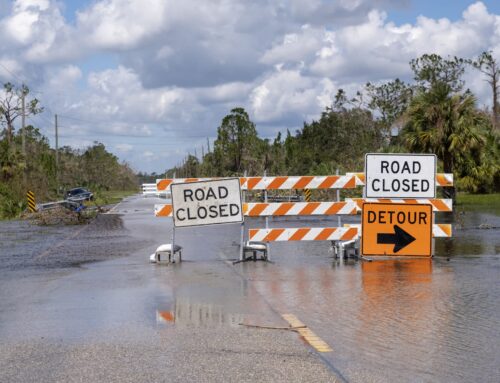
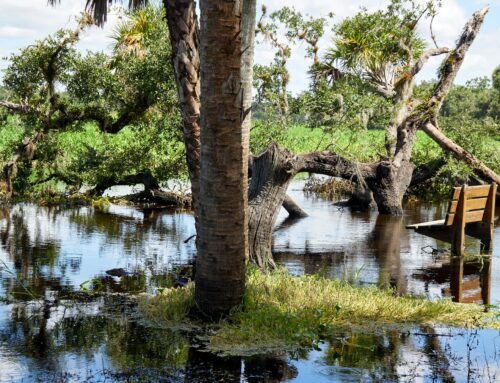
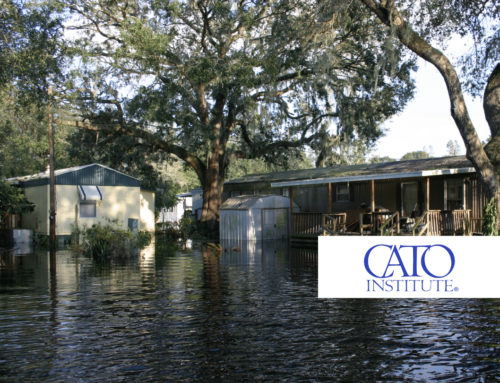
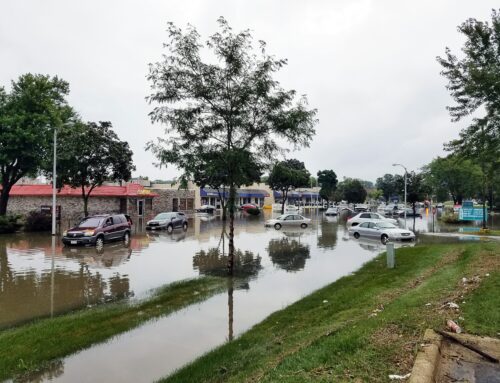

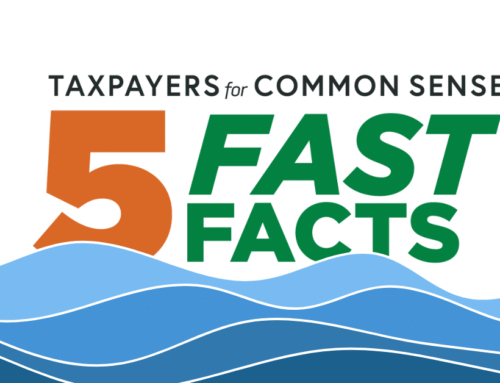
Get Social